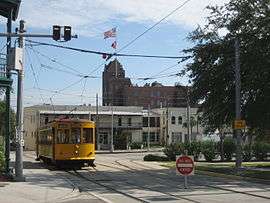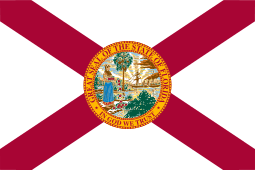TECO Line Streetcar System
| TECO Line Streetcar System | ||||||||||||||||||||||||||||||||||||||||||||||||||||||||||||||||||||||||||||||||||||||||||||||||
|---|---|---|---|---|---|---|---|---|---|---|---|---|---|---|---|---|---|---|---|---|---|---|---|---|---|---|---|---|---|---|---|---|---|---|---|---|---|---|---|---|---|---|---|---|---|---|---|---|---|---|---|---|---|---|---|---|---|---|---|---|---|---|---|---|---|---|---|---|---|---|---|---|---|---|---|---|---|---|---|---|---|---|---|---|---|---|---|---|---|---|---|---|---|---|---|---|
 | ||||||||||||||||||||||||||||||||||||||||||||||||||||||||||||||||||||||||||||||||||||||||||||||||
|
A TECO streetcar picking up passengers in Ybor City | ||||||||||||||||||||||||||||||||||||||||||||||||||||||||||||||||||||||||||||||||||||||||||||||||
| Overview | ||||||||||||||||||||||||||||||||||||||||||||||||||||||||||||||||||||||||||||||||||||||||||||||||
| Type | Heritage streetcar | |||||||||||||||||||||||||||||||||||||||||||||||||||||||||||||||||||||||||||||||||||||||||||||||
| System | HART | |||||||||||||||||||||||||||||||||||||||||||||||||||||||||||||||||||||||||||||||||||||||||||||||
| Status | Operational | |||||||||||||||||||||||||||||||||||||||||||||||||||||||||||||||||||||||||||||||||||||||||||||||
| Locale | Tampa, Florida | |||||||||||||||||||||||||||||||||||||||||||||||||||||||||||||||||||||||||||||||||||||||||||||||
| Termini |
Whiting Station Centennial Park Station | |||||||||||||||||||||||||||||||||||||||||||||||||||||||||||||||||||||||||||||||||||||||||||||||
| Stations | 11[1] | |||||||||||||||||||||||||||||||||||||||||||||||||||||||||||||||||||||||||||||||||||||||||||||||
| Services | 1[1] | |||||||||||||||||||||||||||||||||||||||||||||||||||||||||||||||||||||||||||||||||||||||||||||||
| Daily ridership | 783[2] | |||||||||||||||||||||||||||||||||||||||||||||||||||||||||||||||||||||||||||||||||||||||||||||||
| Website | TECO Line Streetcar System | |||||||||||||||||||||||||||||||||||||||||||||||||||||||||||||||||||||||||||||||||||||||||||||||
| Operation | ||||||||||||||||||||||||||||||||||||||||||||||||||||||||||||||||||||||||||||||||||||||||||||||||
| Opened | October 19, 2002 | |||||||||||||||||||||||||||||||||||||||||||||||||||||||||||||||||||||||||||||||||||||||||||||||
| Owner | City of Tampa | |||||||||||||||||||||||||||||||||||||||||||||||||||||||||||||||||||||||||||||||||||||||||||||||
| Operator(s) | HART | |||||||||||||||||||||||||||||||||||||||||||||||||||||||||||||||||||||||||||||||||||||||||||||||
| Character | At-grade | |||||||||||||||||||||||||||||||||||||||||||||||||||||||||||||||||||||||||||||||||||||||||||||||
| Rolling stock | Birney | |||||||||||||||||||||||||||||||||||||||||||||||||||||||||||||||||||||||||||||||||||||||||||||||
| Technical | ||||||||||||||||||||||||||||||||||||||||||||||||||||||||||||||||||||||||||||||||||||||||||||||||
| Line length | 2.7 mi (4.35 km)[3] | |||||||||||||||||||||||||||||||||||||||||||||||||||||||||||||||||||||||||||||||||||||||||||||||
| Track gauge | 4 ft 8 1⁄2 in (1,435 mm) | |||||||||||||||||||||||||||||||||||||||||||||||||||||||||||||||||||||||||||||||||||||||||||||||
| Electrification | Overhead lines | |||||||||||||||||||||||||||||||||||||||||||||||||||||||||||||||||||||||||||||||||||||||||||||||
| ||||||||||||||||||||||||||||||||||||||||||||||||||||||||||||||||||||||||||||||||||||||||||||||||
The TECO Line Streetcar System is a heritage streetcar transit line in Tampa, Florida, run by the Hillsborough Area Regional Transportation Authority, owned by the city of Tampa, and managed by Tampa Historic Streetcar, Inc. It connects Downtown and Channelside to the historic Ybor City district. There is also an "In-Town" trolley-replica bus system that connects Downtown, Channelside, and Harbour Island.[1]
The line opened on October 19, 2002, and is 2.7 mi (4.35 km) long[3] with 11 stations.[1] The system is single-track with several passing sidings, which mostly follows a reserved right-of-way at a cost of 13.7 million per mile. Ten replica historic streetcars and one restored historic streetcar are used on the line. The replica cars themselves cost $600,000 each. The annual insurance cost of the line is $400,000 with most of that cost being a requirement by CSX Transportation for insurance to cross over their freight tracks near the intersection of 5th Avenue and 13th Street.
History
Tampa's first electric streetcars were introduced in 1892.[3] Streetcars in Tampa reached their peak of popularity in the 1920s, with almost 24 million passengers carried in 1926.[3] The first line shut down on August 4, 1946.[3] The first streetcar system used the Birney Safety Car and, probably, other streetcar types.
Streetcars returned to Tampa in 2002, when the initial 2.4 mi (3.86 km) long[3] heritage line was opened. Its operating costs are financed through a "Special tax assessment" (.33 per thousand) on businesses in the streetcar district and a streetcar endowment stemming from settlement money received in 2006 by the city for the demolition of the Harbor Island People Mover.
In its first year of operation, the streetcar carried 420,000 riders, 20% more than projected. In 2005, 434,498 passengers used the streetcar. In 2011, Streetcar ridership from October 2011 through May decreased by 8.3 percent to 265,148 with a total for the year of 358,737 riders. In 2015, the streetcar served 285,900 passengers.[2]
A new 0.333 mi (0.54 km) extension,[3] costing $5.5 million, opened for revenue service on December 19, 2010. The extension runs north along Franklin Street to Whiting Street and the Fort Brooke parking garage,[3] connecting the Convention Center as well as the rest of the TECO Line to the downtown core.[4]
Station list
- Whiting (connection to Routes 14 and 30; access to Fort Brooke parking garage)
- Dick Greco Plaza (connection to In-Town Trolley Purple Line (weekday peak service) to various points in downtown Tampa, Harbour Island, & Channelside; signed as TRANSPORTATION PLAZA on rollsigns)
- HSBC
- The Tampa Tribune
- Cumberland Avenue
- York Street
- Port Authority
- Cadrecha Plaza
- Streetcar Society
- Tampa Bay Federal Credit Union
- Centennial Park
Rolling stock
The system has eleven operating streetcars: nine modern replica double-truck Birney cars, one replica open-bench "Breezer" (similar to J.G. Brill cars built for Metropolitan Street Railway of New York), and one restored original Birney car. All except the original Birney were built by the Gomaco Trolley Company.
The replica Birney cars have a welded steel body with cosmetic rivets added to make them look older. The cars are wheelchair-accessible, air-conditioned and have automated stop announcements. The seats are made of wood and are reversible for when the car changes direction. The cars are also equipped with on-board ticket dispensers; however, they do not provide change.
The original Birney #163 streetcar ran on the Tampa & Ybor City Street Railway between 1923 and 1946. It was found in 1991 in Sulphur Springs, a neighborhood in Tampa, where it had been used as an apartment and later a storage shed. After extensive restoration the car is back to its former condition and is used for special events, such as Streetcar Fest in mid-October. It is Florida's only operational historic streetcar.[5]
Financing
The agency that operates the streetcar is a non-profit.[6] On October 22, 2014, the Tampa Bay Times published an editorial on the leverage a subsidy the Tampa Port Authority gives to the streetcar system. However it also wrote that the system "is not dependent" on the subsidy. They also reported that the system has to pay almost half a million dollars in insurance to cover the risk of streetcars crossing an active freight rail line.
The regular one-way fare is $2.50, or $5 for a day pass. Discounted rates are half. There is also a family pass for $12.50.[7]
Gallery

Streetcar in Ybor City 
Wooden streetcar interior 
Streetcar in downtown Tampa 
Streetcar ticket machine 
"Breezer" streetcar at Greco Plaza stop
See also
- Light rail in the United States
- List of heritage railroads in the United States
- List of streetcar systems in the United States
- Orange Blossom Cannonball
- Streetcars in North America
- Transportation in Florida
References
- 1 2 3 4 "Downtown Network Map - Downtown Network of Services" (PDF). Hillsborough Area Regional Transit (HART). 2012. Retrieved 2013-08-18.
- 1 2 "Transit Ridership Report Fourth Quarter 2015" (pdf). American Public Transportation Association. March 2, 2016. Retrieved September 20, 2016 – via http://www.apta.com/resources/statistics/Pages/ridershipreport.aspx.
- 1 2 3 4 5 6 7 8 "TECO Line Streetcar System – Streetcar System". TECOline Streetcar System. 2012. Retrieved 2013-08-18.
- ↑ "Streetcar system reaches more of downtown Tampa". Tampa Bay Business Journal. December 17, 2010. Retrieved 2011-01-24.
- ↑ Streetcar Vehicles - Birney Car
- ↑ "Editorial: Tampa trolley gets helpful push". Tampa Bay Times. October 22, 2014. Retrieved 2014-10-25.
The Tampa Port Authority's decision to withhold a subsidy from the downtown streetcar until the trolley system comes up with a stronger business plan could be a helpful turning point for this key public asset. The port should use this leverage, though, to make the trolley much more integral to the remaking of the Channel District.
- ↑ "Streetcar Fares". tecolinestreetcar.org. Retrieved November 26, 2016.
External links
| Wikimedia Commons has media related to TECO Line Streetcar System. |
